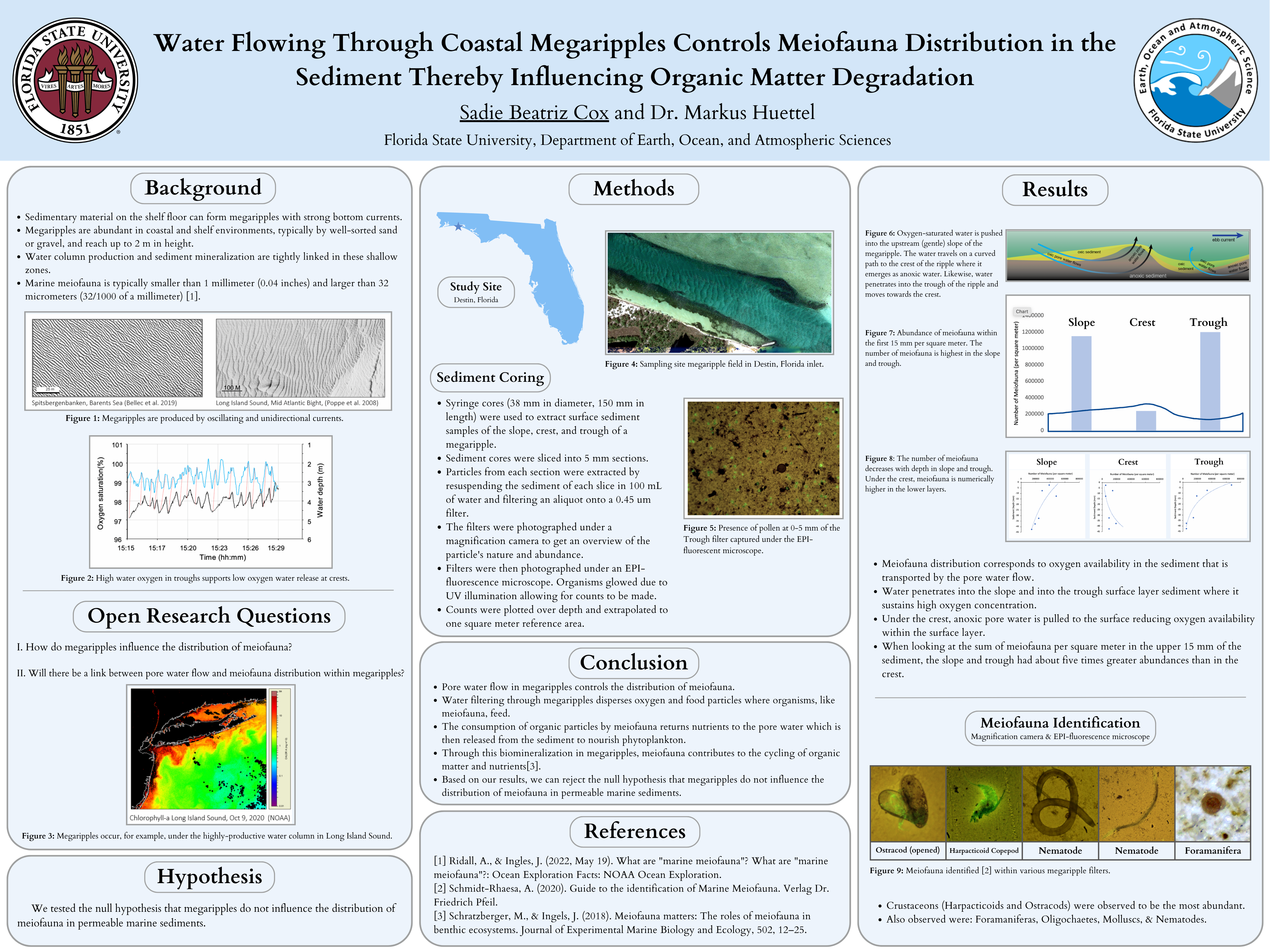Research Symposium
23rd annual Undergraduate Research Symposium, April 6, 2023
Sadie Beatriz Cox Poster Session 2: 1:30 pm - 2:30 pm/ Poster #416

BIO
My name is Sadie Beatriz Cox and I am a senior from Miami, FL. I grew up on both coasts, in Miami, FL & Manhattan Beach, CA, where the ocean revolved around most of my hobbies and interests. I went to high school at MAST Academy in Key Biscayne, FL where I continued to enjoy Marine-based courses. I am PADI Open Water Scuba certified and hope to get Advanced certification before graduating. As my time here comes to an end, I hope to return home to Miami, FL to attend the University of Miami's Rosenstiel School of Marine, Atmospheric, and Earth Science for my Masters in Marine Geoscience and hopefully a Ph.D. In 5 years I hope to see myself continuing researching and still reaching my goal of being a professor.
Water Flowing Through Coastal Megaripples Controls Meiofauna Distribution in the Sediment Thereby Influencing Organic Matter Degradation
Authors: Sadie Beatriz Cox, Dr. Markus HuettelStudent Major: Environmental Science and Policy
Mentor: Dr. Markus Huettel
Mentor's Department: Department of Earth, Ocean, and Atmospheric Sciences Mentor's College: Florida State University Co-Presenters:
Abstract
A large fraction of the organic matter and pollutants released from lands to the oceans is decomposed in continental shelf sediments. About half of the continental shelf consists of covered sandy sedimentary material with sufficient permeability allowing rapid aerobic degradation of organic matter and nutrient remobilization. The sedimentary material on the shelf floor can form megaripples if bottom currents are strong, as can be seen in the inlet to Choctawhatchee Bay at Destin, FL. The goal of this study was to determine if megaripples act as large sand filters and influence sedimentary meiofauna. We tested the working hypothesis that slope, crest, and trough sediments of the megaripples differ in their particle content and meiofauna abundance. Sediment cores extracted vertically from the slope, crest, and trough of the megaripple highlighted the relationship between pore water flow direction and particle concentration in the sediment. Slope and trough were found to effectively filter water, revealing higher particle matter concentrations towards the sediment surface whereas the crest filtered less as revealed by a lower concentration of particulate matter in the sand. The benthic meiofauna (mostly small crustaceans, nematodes, and oligochaetes) followed this distribution. The study determined that the distribution patterns of organisms in the core followed the density of distributed matter. Megaripples thus act as large filter systems controlling organic matter distribution in the sediment surface layers and thereby also strongly influence the distribution of the benthic meiofauna.
Keywords: marine, meiofauna, megaripple, distribution, degradation


